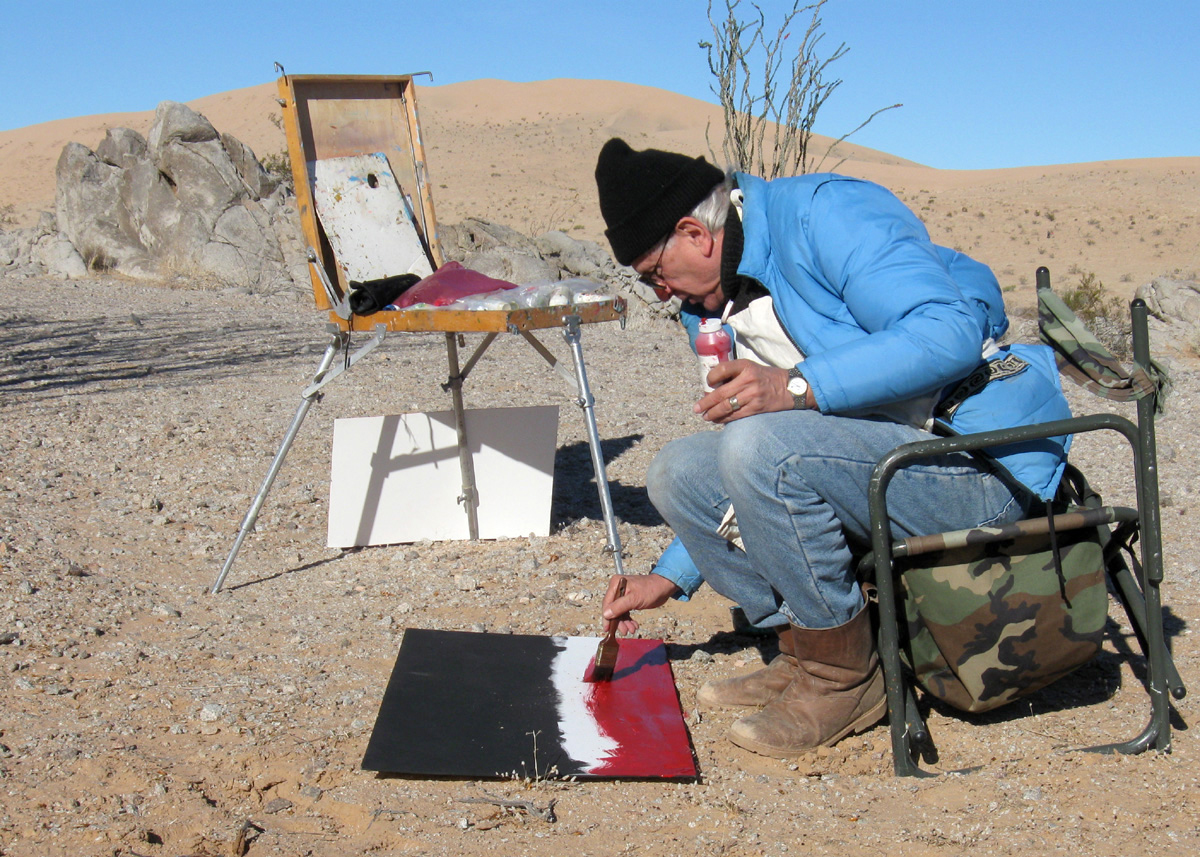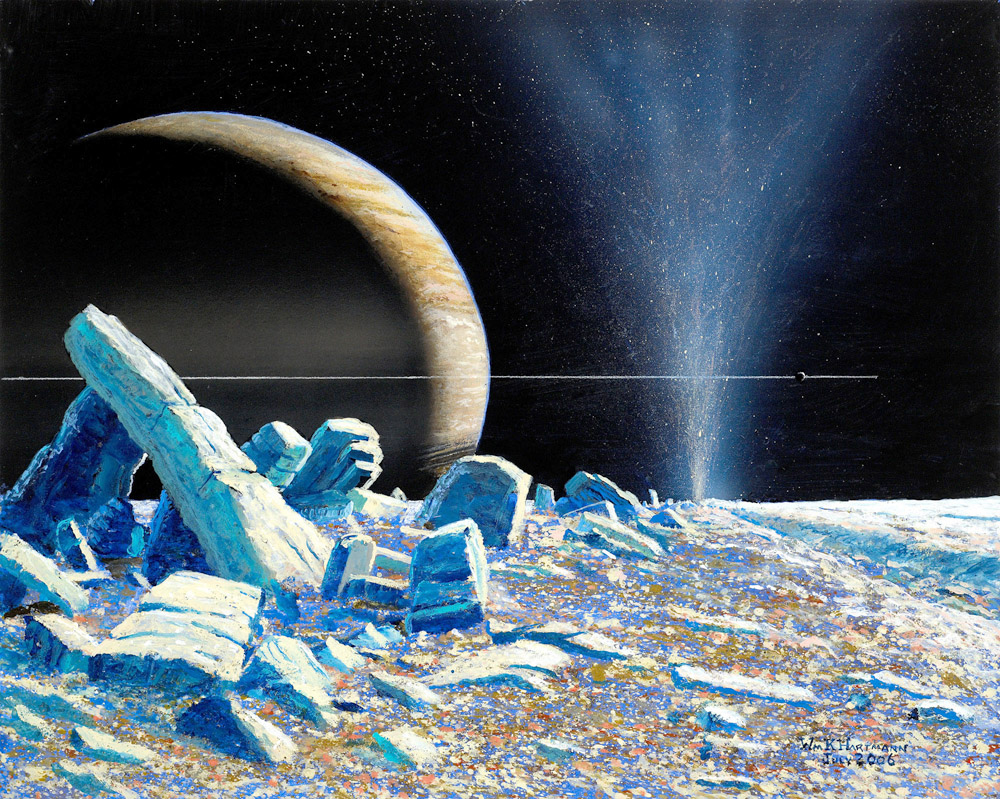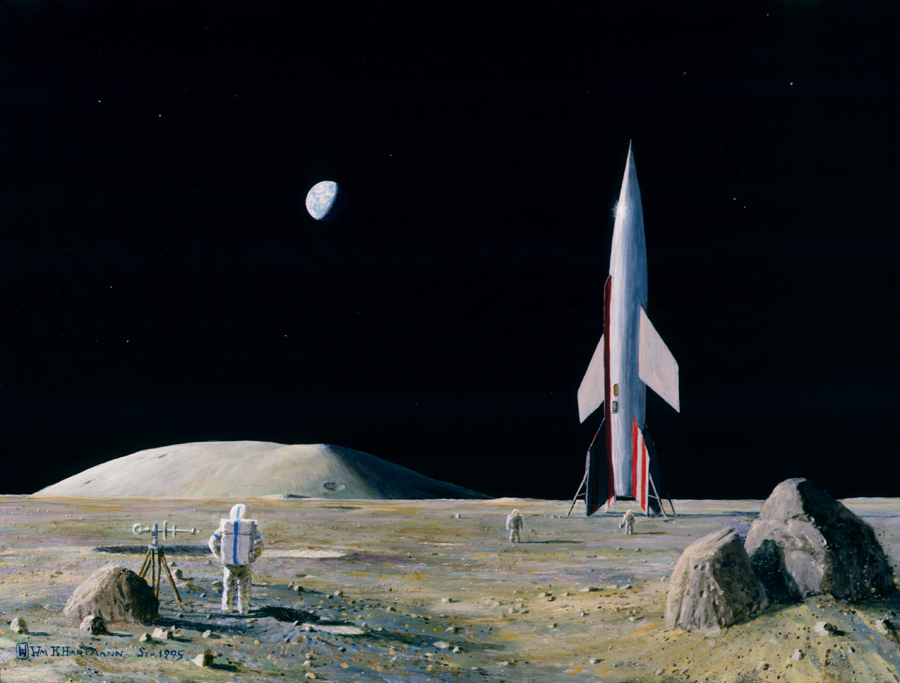Report
SCIENCE & ART: How astronomical artists look at nature
- Published: Wednesday, November 06 2013 18:05
BY WILLIAM K. HARTMANN, PLANETARY SCIENCE INSTITUTE, TUCSON, ARIZ.

People often ask me — and I often ask myself — is there an interplay between my planetary science research and my painting? Does my interest in painting affect the way I do science? I’m pretty sure the answer is yes, but it’s hard to explain why, even to myself!
I often start by arguing that there are various ways of “knowing.” My best example is that a physicist could master principles of rotational angular momentum, and coefficients of restitution and elasticity of tennis balls — and still be a lousy tennis player. So there’s a kind of knowledge that I call “body knowledge” that comes from bodily and visual experience, as well as a “mind knowledge” that comes from traditional scientific activities such as quantitative data analysis, numerical modeling, classifying and breaking natural phenomena into constituent aspects.
Painting landscapes from nature provides “body knowledge” of how planetary materials and formations look under real sunlight. From the Arizona desert to Icelandic volcanics, I’ve spend a fair amount of time camping and on workshops organized by the International Association of Astronomical Artists, where I may spend three or four hours sitting in one spot, painting dunes, lava flows, dry riverbeds, etc.. Three or four hours contemplating a formation seems to provide more intimate familiarity than the 1/125 of a second (or maybe minutes) that one might devote to photographing such a formation.

Caption: The author, painting Mars-like dunes and basaltic rocks on a cold day in the Gran Desierto, Sonora, Mexico. I start with an “underpainting” where I often incorporate soil from the location to add texture and a small bit of the actual site. (Photo by Dale Turner).

Caption: “Enceladus Eruption”. Polar eruptions on Saturn’s satellite Enceladus, as discovered by the Cassini orbiter. Rings are parallel to the horizontal because we are at the pole of a synchronously rotating satellite. The foreground ridge of shattered ice was painted from nature at a location in Hawaii Volcanoes National Park where pressure ridges of slabby lava created an analog to possible ice pressure ridges on Enceladus. (Copyright William K. Hartmann).
As a result, I’ve had interesting experiences as a participating scientist on Mariner 9, Mars Global Surveyor, and Mars Express imaging teams. I’ve worked with many scientific teammates who grew up in leafy climes (like I did in western Pennsylvania), and witnessed an initial reaction to new Mars images: back-of-the-envelope calculations, to see if it is possible for sand dunes or lava flows or dry riverbeds to look like this, under the measured atmospheric and gravity, whereas my initial reaction is that a month ago I was camped and painting landscapes in a place that looked just like that. For me, the body knowledge seemed to provide a different “starting point” for analysis than the theoretical considerations of my colleagues.

Caption: “Homage to Bonestell”. As a boy, I was inspired by the paintings of Chesley Bonestell, father of American astronomical art, especial his famous view of a silvery rocket on a craggy moon, reproduced on the classic 1949 book, “Conquest of Space.” I got to know Bonestell when he was in his 80s, and benefitted from a number of visits and discussions, so I made this painting, “Homage to Bonestell,” by copying his rocket and the funky instrument on a wooden tripod, but placing them on the moon as we later first came to know it in 1969 during the Apollo missions. (By chance, at about the same time, my fellow IAAA artist, English painter David A. Hardy, had a similar idea, idea and painted the Apollo landing module on Bonestell’s craggy moon!) (Copyright William K. Hartmann).
In the interests of full disclosure, my B.S. is in physics (Penn State), M.S. in geology and Ph.D. in astronomy (Univ. Arizona), but I have an uneasy feeling that our whole society, from scientific meetings to geo-economic affairs, is gravitating toward a belief that experiential/observational knowledge doesn’t count until someone has reconfigured it into a “model,” complete with uncertain parameters and fallible assumptions.
In any case, as I’ve come to know the history and community of landscape painters, I’ve been impressed that they have absorbed all sorts of knowledge from nature that physical scientists do no yet know, or do not even study. I like to shock my physicist friends by suggesting that the Rayleigh scattering of blue skies should called da Vinci scattering. Leonardo wrote an unfinished book about painting, in which he analyzed why things look the way they do. He showed a cartoon of four distant church or clock towers, whose tops extending to the same angular height above a foreground brick wall. He tells us that one tower is considerably more distant than the others, and said that a good painter should be able to show which one is the most distant (even though the base of each tower is hidden). From his own observations, he noted that contrast is reduced and blue light is added by the air between the observer and the object. Rayleigh, of course, developed the quantitative theory so that we can predict results, but the actual phenomenon was discussed some three centuries earlier in the context of painting.
Generalizing this idea, I recall that my astronomical painter friend Pam Lee remarked to me years ago that when it comes to rendering landscapes, “your brain is your worst enemy.” As a scientist, I hated this idea when I first heard it! But finally I realized its Zen truth: If you are trying to paint (or describe?) something, your mental preconceptions prevent you from really seeing it at it really is. For example a beginning painter who sees distant, tree-covered mountains paints them as green, because everyone knows that trees are green. In reality, due to the da Vinci effect, the more distant a dark mountain, the more blue and pale it is. As painters learn, you have to train your mind to see objects as they really are, rather than through preconceptions transmitted through words and theories. But if you are detached from “body knowledge,” lost in your own numerical model, you will have more trouble learning that lesson.

Caption: “Extrasolar Planet”. During a brainstorming session with Joel Hagen and other IAAA artists in the 1980s, I got the idea that a likely type of Earth-like oceanic world could be the satellite of an extra solar gas giant planet. This 2004 painting of such a world was inspired by my views of the Pacific from a location where I was staying in Hawaii. (Copyright William K. Hartmann).
Next: Interview with William Hartmann







Comments